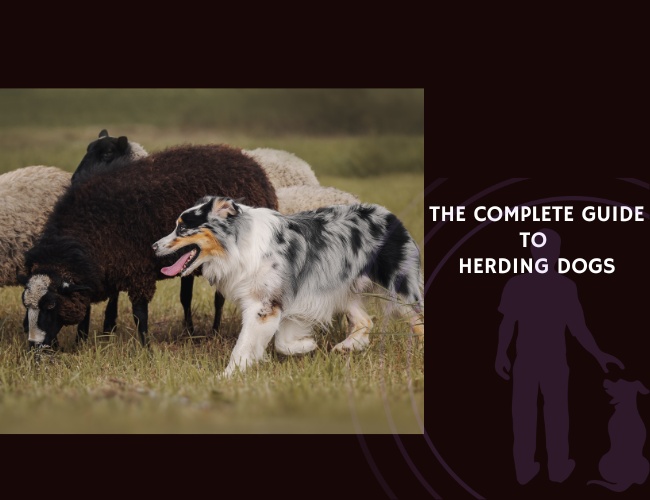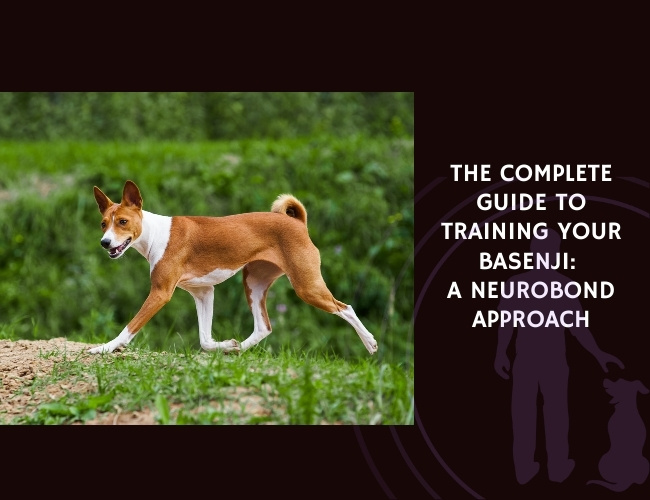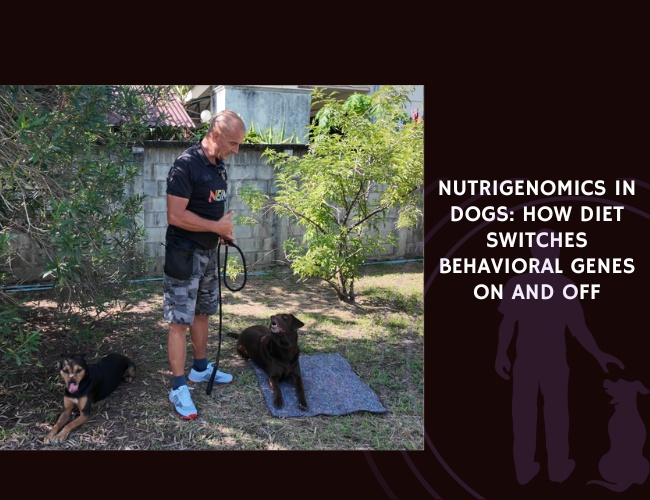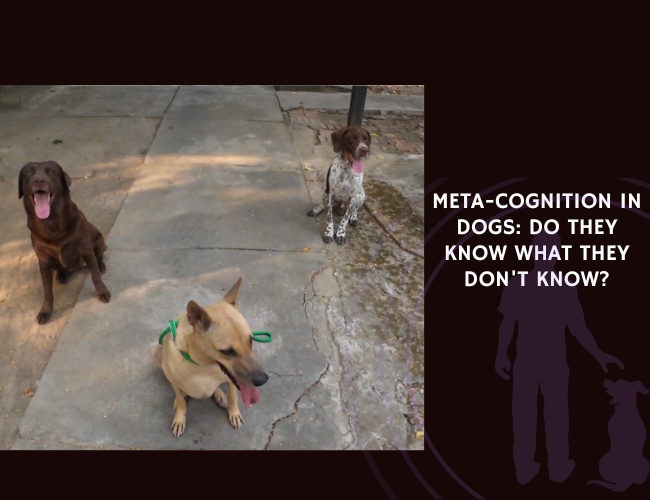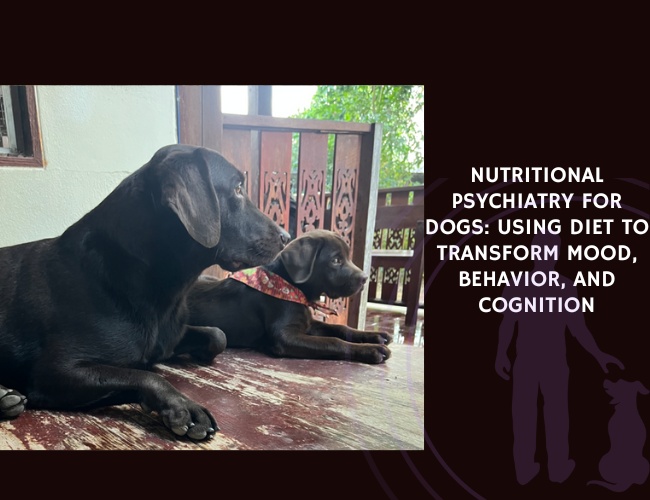Introduction: Meeting Your Tireless Working Partner
Did you know that when your Border Collie tries to “herd” your children during playtime, they’re expressing an ancient instinct that’s been refined over thousands of years? Herding dogs represent one of humanity’s most remarkable achievements in selective breeding, creating partners that can think independently while maintaining deep bonds with their human companions. These intelligent, driven breeds have shaped civilizations, protected livelihoods, and today, they continue to amaze us with their capabilities—whether working on farms or enriching our lives as devoted family members.
Let us guide you through the fascinating world of herding dogs, where instinct meets intelligence, and where understanding your dog’s heritage can transform your relationship with your furry friend. From the misty highlands of Scotland to the vast Australian outback, these dogs have stories written into their very DNA. 🐾
Character & Behavior: The Heart of a Herding Dog
Understanding the Herding Mindset
Your herding dog doesn’t just want to work—they need to work. This isn’t stubbornness or hyperactivity; it’s the expression of carefully selected genetic traits that have been refined over millennia. When you watch your Australian Shepherd circle your backyard with laser focus, you’re witnessing modified predatory behavior that’s been transformed into something extraordinary.
The predatory sequence reimagined: Unlike their wolf ancestors who complete the hunt with a kill, herding dogs have had their predatory sequence beautifully interrupted. They’ll stalk, chase, and control movement, but that final bite has been bred out of them. This makes them perfect partners for managing livestock—and sometimes, managing your household! You might notice your Corgi attempting to organize family members during gatherings, or your Border Collie giving “the eye” to anything that moves. These aren’t behavioral problems; they’re features, not bugs, of these remarkable breeds.
Initiative meets obedience: What makes herding dogs truly special is their ability to balance independent thinking with responsive partnership. Research from Australian working dog handlers reveals that the most valued traits differ by context—in open fields, dogs with initiative and intelligence shine, while in confined spaces, firmness and physical suitability take precedence. Your herding dog carries both capabilities, switching between independent problem-solver and attentive partner based on the situation.
The Emotional Intelligence Factor
Herding dogs possess an emotional depth that often surprises new owners. They’re not just smart; they’re emotionally attuned to their environment and especially to you. This sensitivity stems from generations of dogs who needed to read both human cues and animal behavior simultaneously.
Reading the room—and the flock: Your herding dog’s ancestors had to interpret subtle shifts in sheep behavior while simultaneously responding to shepherd whistles from hundreds of yards away. This dual awareness makes modern herding dogs incredibly perceptive to household dynamics. They know when you’re stressed before you do, and they’ll often position themselves strategically to monitor all family members—a behavior that feels like love because, in many ways, it is.
The burden of brilliance: With great intelligence comes great sensitivity. Herding dogs can develop anxiety when their environment lacks structure or when their incredible minds aren’t given adequate challenges. This isn’t weakness; it’s the flip side of their remarkable capabilities. Understanding this helps you provide the support your brilliant companion needs. 🧠
Vocalization & Communication: How Your Herding Dog “Talks”
The Language of Work
Every herding breed has developed its own communication style, shaped by the specific demands of their traditional work. Understanding these differences helps you decode what your dog is trying to tell you.
The quiet controllers: Border Collies and Australian Kelpies often work in near silence, using body language and that famous “eye” to control livestock. If you have one of these breeds, you’ll notice they communicate volumes without making a sound. A shifted weight, a lowered head, a fixed stare—these are complete sentences in Border Collie language. When they do vocalize, it’s purposeful and specific, often indicating excitement, frustration, or the need for your attention.
The vocal directors: In contrast, breeds like the New Zealand Huntaway were specifically developed to use their voice as a herding tool. Their deep, resonant barks can move entire flocks across mountainous terrain. If you share your life with a vocal herding breed, remember that their barking isn’t defiance—it’s communication. They’re telling you about changes in the environment, expressing their work drive, or simply maintaining their traditional role as the family’s information officer.
Decoding Daily Communications
Your herding dog’s vocalizations at home carry specific meanings that, once understood, can deepen your bond significantly.
The “alert and report” bark: Quick, sharp barks often mean “Something’s different!” This could be a delivery person, a squirrel, or even a leaf moving suspiciously. Your dog isn’t being dramatic; they’re doing their job of monitoring and reporting environmental changes.
The “let’s work” whine: That particular pitched whine, often accompanied by intense eye contact, typically means “I need a job, please!” This is your cue to engage their brilliant mind with training, puzzle toys, or interactive play. Ignoring this communication can lead to your dog creating their own entertainment—usually involving reorganizing your shoe collection or redesigning your garden. 😄
The “herding grumble”: Many herding dogs develop a distinctive low grumble or “talking” when they’re trying to move or organize things. This isn’t aggression; it’s their working vocalization. You might hear it when they’re trying to get the cat to move, encouraging you toward the door for walks, or expressing opinions about household management.
Choosing Your Herding Partner: Breed-by-Breed Guide
Understanding Breed Differences
Not all herding dogs are created equal, and that’s the beauty of it. Each breed was developed for specific terrain, climate, and livestock, creating a wonderful diversity of temperaments and working styles. Let’s help you find your perfect match.
The energy spectrum reality: While all herding dogs are active, there’s a significant difference between a Pembroke Welsh Corgi’s manageable energy and a Belgian Malinois’s intensity. Understanding these differences prevents frustration for both you and your future companion. Remember, choosing a breed that matches your lifestyle isn’t settling—it’s setting everyone up for success.
Comprehensive Breed Comparison Guide
Let us break down the major herding breeds to help you make an informed decision:
Border Collie
- Energy Level: 10/10
- Exercise Needs: 2-3+ hours daily
- Grooming: Moderate (weekly brushing, daily during shedding)
- Apartment Suitability: Possible with dedication (2/5)
- First-Time Owner Friendly: Not recommended (2/5)
- Child Compatibility: Good with proper socialization (4/5)
- Working Style: Intense eye, stalking, silent control
- Special Considerations: Needs mental stimulation more than physical exercise
Australian Shepherd
- Energy Level: 9/10
- Exercise Needs: 2-3 hours daily
- Grooming: High (brushing 3-4x weekly)
- Apartment Suitability: Challenging but possible (3/5)
- First-Time Owner Friendly: With commitment (3/5)
- Child Compatibility: Excellent family dog (5/5)
- Working Style: Versatile – eye, grip, and bark
- Special Considerations: Often sensitive to medications (MDR1 gene)
- Energy Level: 8/10
- Exercise Needs: 2+ hours daily
- Grooming: High (daily brushing recommended)
- Apartment Suitability: Adaptable with exercise (3/5)
- First-Time Owner Friendly: Moderate (3/5)
- Child Compatibility: Excellent with family (5/5)
- Working Style: Boundary patrol, protective herding
- Special Considerations: Needs clear leadership and structure
Pembroke Welsh Corgi
- Energy Level: 7/10
- Exercise Needs: 1-2 hours daily
- Grooming: Moderate to high (lots of shedding!)
- Apartment Suitability: Good (4/5)
- First-Time Owner Friendly: Good with research (4/5)
- Child Compatibility: Good, may try to herd them (4/5)
- Working Style: Heel nipping, driving cattle
- Special Considerations: Watch weight carefully, prone to obesity
- Energy Level: 7/10
- Exercise Needs: 1-1.5 hours daily
- Grooming: High (daily brushing ideal)
- Apartment Suitability: Good (4/5)
- First-Time Owner Friendly: Excellent (5/5)
- Child Compatibility: Wonderful with children (5/5)
- Working Style: Barking, circling, gentle guidance
- Special Considerations: Can be vocal, sensitive temperament
- Energy Level: 10/10
- Exercise Needs: 2-3+ hours daily
- Grooming: Low (weekly brushing)
- Apartment Suitability: Not recommended (1/5)
- First-Time Owner Friendly: Not recommended (1/5)
- Child Compatibility: Better with older children (3/5)
- Working Style: Heel nipping, tough and persistent
- Special Considerations: Extremely high drive, needs a job
- Energy Level: 10+/10
- Exercise Needs: 3+ hours daily
- Grooming: Low to moderate
- Apartment Suitability: Not suitable (1/5)
- First-Time Owner Friendly: Absolutely not (1/5)
- Child Compatibility: Requires careful management (3/5)
- Working Style: Intense, driven, highly responsive
- Special Considerations: Needs experienced handler, professional training

Day in the Life: Real-World Breed Scenarios
Understanding what daily life actually looks like with different herding breeds helps you visualize your future together. Here’s what you might expect:
Living with a Border Collie: Sarah’s Story 6:00 AM: Jasper is awake, staring intently at Sarah from beside the bed. Not demanding, just… watching. Waiting. 6:30 AM: Morning training session in the yard—practicing agility sequences and new trick combinations. Jasper’s focus is laser-sharp. 7:30 AM: Breakfast in a puzzle feeder while Sarah gets ready for work. 8:00 AM: Sarah works from home; Jasper settles on his mat but positions himself to watch both the door and Sarah’s desk. 12:00 PM: Lunchtime walk with training intervals—practicing recalls around distractions, heel work past squirrels. 1:00 PM: Afternoon puzzle toy to occupy his mind during Sarah’s video calls. 5:30 PM: The real exercise—fetch with rules, directional commands, and distance work at the park. 7:00 PM: Dinner, then trick training while Sarah watches TV. Jasper learns to bring specific items by name. 9:00 PM: “Off duty” command given. Jasper finally truly relaxes, though he still sleeps where he can monitor the household.
Living with an Australian Shepherd: Mike’s Experience 5:30 AM: Bella brings her leash to the bed—subtle but effective wake-up call. 6:00 AM: Morning jog together, 3-4 miles. Bella runs ahead, circles back, always keeping Mike in sight. 7:30 AM: Breakfast, then Bella “helps” wake the kids for school, gently nudging them and wagging enthusiastically. 8:30 AM: While Mike works, Bella cycles between her window watching post and checking on him every 30 minutes. 12:00 PM: Backyard play session—frisbee and soccer with specific rules Bella has learned. 3:30 PM: Kids return from school; Bella immediately goes into “shepherd mode,” following them and ensuring homework happens. 5:00 PM: Family walk where Bella keeps everyone together, gently herding stragglers. 7:00 PM: Settles during dinner but under the table where she can touch everyone’s feet. 8:30 PM: Evening training class once a week, or practicing at home. Bella loves learning new things with the whole family involved. 10:00 PM: Finally sleeps, usually in the hallway where she can monitor all bedroom doors. 🐾
Living with a Pembroke Welsh Corgi: Lisa’s Routine 7:00 AM: Winston waddles to Lisa’s bedside with his signature “morning grumble”—not quite a bark, but definitely communication. 7:30 AM: Breakfast with a 15-minute training session. Winston’s food motivation makes morning training especially effective. 8:30 AM: Lisa leaves for work; Winston settles in his apartment window perch for neighborhood surveillance duty. 12:30 PM: Dog walker arrives for 45-minute walk. Winston tries to herd every dog they meet at the park. 5:30 PM: Lisa returns home to enthusiastic but manageable greeting. Winston does his “welcome home” spin dance. 6:00 PM: Evening walk through the neighborhood, with Winston alerting to every change from yesterday’s route. 7:00 PM: Dinner, then settle time. Winston positions himself where he can see both the TV and kitchen. 8:30 PM: Puzzle toy time or hide-and-seek with treats—mental stimulation is crucial for apartment life. 10:30 PM: Final potty break, then Winston claims his spot at the foot of the bed, ready to alert to any nighttime disturbances.
Living with a German Shepherd: David’s Partnership 6:00 AM: Rex waits patiently by David’s bed, but his internal clock is precise. At 6:05, a gentle nose nudge. 6:30 AM: Structured morning walk with specific heel work and checking boundaries of “their” territory. 7:30 AM: Breakfast, then Rex takes his self-appointed position by the front window for morning watch duty. 8:30 AM: David works from home; Rex switches between his bed and doorway positions every hour. 12:00 PM: Training session focusing on protection sports or scent work—Rex needs purposeful work. 1:00 PM: Rest time, but Rex never fully relaxes during daylight hours, always maintaining awareness. 5:00 PM: Long evening adventure—hiking, swimming, or advanced training at the club. 7:00 PM: Family dinner; Rex lies nearby but alert, clearly “on duty” protecting his people. 9:00 PM: Evening patrol of the yard, checking all boundaries before settling for the night. 10:00 PM: Rex sleeps by the bedroom door, positioned between his family and any potential threats.
Training & Education: Nurturing Natural Brilliance
Foundation Building: Start Where You Are
Training a herding dog isn’t just about teaching commands—it’s about channeling instincts and building partnership. These dogs were bred to work cooperatively with humans, making them incredibly responsive to proper training approaches.
The home classroom advantage: Successful herding dog training often begins far from any livestock. Barbara Buchmayer’s proven method starts in your living room and backyard, building foundation skills without the overwhelming distraction of animals to herd. This means you can begin meaningful training immediately, regardless of your living situation. Start with impulse control games, directional commands, and focus exercises that tap into their natural abilities.
Positive reinforcement meets instinct: While traditional herding training sometimes incorporated corrections, modern understanding shows that herding dogs respond brilliantly to positive reinforcement for most behaviors. Their high trainability—a trait genetically linked to their herding heritage—means they actively seek to understand and please you. Use this to your advantage by making training a rewarding puzzle for them to solve.
Advanced Training: Channeling the Drive
Once foundations are solid, herding dogs excel at complex training that engages both their bodies and minds.
The beauty of behavior chains: Herding dogs naturally understand sequences—after all, gathering sheep involves multiple steps performed in order. Use this by teaching complex behavior chains. Instead of just “fetch,” teach “find it, pick it up, bring it, place it in the basket, and close the lid.” Your dog will thrive on the complexity.
Variable reinforcement mastery: These intelligent dogs quickly figure out patterns, so varying your rewards keeps them engaged. Sometimes a treat, sometimes play, sometimes praise—this variability actually strengthens behaviors more than consistent rewards. Think of it as keeping your brilliant student guessing and engaged.
The “off switch” training: Perhaps the most crucial skill for herding dogs is learning to relax on cue. This isn’t natural for them—their ancestors worked dawn to dusk. Teaching a “settle” or “off duty” command helps them understand when work time ends. Practice this in gradually increasing durations, rewarding calm behavior as enthusiastically as you reward active work.
Performance & Activities: Jobs for the Modern Herding Dog
Traditional Work in Contemporary Settings
Even if you don’t have a flock of sheep, you can provide activities that satisfy your herding dog’s working heritage.
Treibball—urban herding: This sport involves directing large exercise balls into goals, mimicking the herding experience without livestock. Your dog uses the same skills—stalking, pushing, directing—but with equipment you can set up in any park or large backyard. It’s particularly perfect for dogs with strong herding drives living in suburban or urban settings.
Herding instinct tests: Many areas offer herding instinct tests where your dog can safely interact with sheep or ducks under professional supervision. Even if you never pursue competitive herding, these experiences can be profoundly satisfying for your dog, allowing them to express deeply rooted instincts in a controlled environment.
Modern Jobs for Ancient Instincts
Creative job assignments can transform a restless herding dog into a fulfilled family member.
The household helper: Teach your herding dog to collect laundry, gather toys, or even help with recycling. These tasks satisfy their need to work while making them genuine contributors to household management. One Border Collie owner taught their dog to sort recycling by material type—a complex job that kept their brilliant dog engaged and helpful.
The family coordinator: Many herding dogs naturally take on the role of family organizer. Instead of discouraging this, channel it productively. Teach them to “gather the kids” for dinner, “find Dad” when needed, or even help with morning routines by waking family members gently. These jobs honor their herding heritage while serving practical purposes.
Search and rescue games: The same focused attention and problem-solving abilities that make great herding dogs also create excellent search dogs. Hide-and-seek games with family members or scent work with specific objects provide mental stimulation while building useful skills. Start simple and gradually increase complexity as your dog masters each level. 🐾
Focused. Driven. Attuned.
Instinct drives purpose. Herding dogs carry a reimagined predatory sequence, stopping short of the kill yet excelling at control. Circling, stalking, and “the eye” are living imprints of selective breeding, not misbehavior.
Balance builds brilliance. These dogs shift seamlessly between initiative and obedience, solving problems in open fields while responding instantly in close quarters. Their adaptability makes them both independent thinkers and reliable partners.
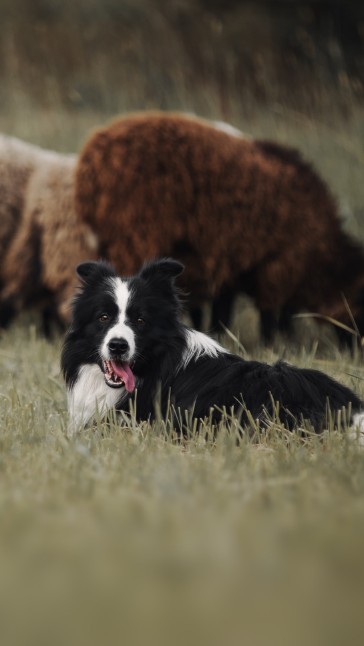

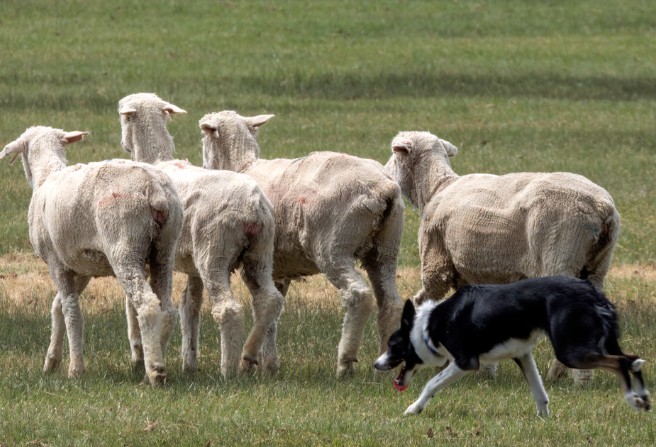
Sensitivity deepens bonds. Emotional intelligence allows herding dogs to read human signals as keenly as livestock movements. This attunement creates profound connection, making them not only skilled workers but empathetic companions.
Nutritional Recommendations: Fueling the Working Mind and Body
Energy Requirements for Active Minds
Herding dogs have unique nutritional needs that reflect both their physical activity and their mental intensity. A working brain burns calories too, and these dogs have very active minds.
Caloric density matters: An active herding dog may need 20-30% more calories than a similar-sized dog of a less active breed. However, it’s not just about quantity—quality and timing matter significantly. High-quality proteins support muscle maintenance and mental function, while complex carbohydrates provide sustained energy for those long training sessions or hikes.
The mental energy factor: You might notice your herding dog seems hungrier after intensive training sessions, even if they weren’t particularly physically active. This is because mental work burns significant calories. Puzzle-solving, learning new commands, and focused attention all require energy. Adjust feeding amounts based on both physical and mental activity levels.
Feeding Strategies for Optimal Performance
How you feed can be as important as what you feed when it comes to herding dogs.
Work for food programs: Transform mealtime into work time by using puzzle feeders, scattered feeding, or training rewards. This approach satisfies their need to work while slowing down fast eaters—a common issue in eager herding breeds. Your dog’s ancestors worked for their supper; modern puzzle feeders honor this heritage while preventing boredom.
Timing for focus: Many herding dog owners find that feeding smaller, more frequent meals helps maintain steady energy and focus throughout the day. A large meal can lead to post-meal lethargy, while going too long between meals can create restlessness. Experiment to find what schedule keeps your dog alert but settled.
Supplements for joint health: Given their active nature and sometimes intense working style, many herding dogs benefit from early joint support. Glucosamine, chondroitin, and omega-3 fatty acids can help maintain the flexibility and endurance these athletic dogs need. Start these supplements before problems arise—prevention is always easier than treatment.
Health Concerns: Genetic Heritage and Modern Management
Breed-Specific Vulnerabilities
Understanding your herding dog’s genetic predispositions helps you provide proactive care.
The epilepsy connection: Several herding breeds, particularly Australian Shepherds and Border Collies, show higher rates of idiopathic epilepsy. Research has identified specific genetic markers, including associations with the EPHB1 gene linked to neurological function. If your dog develops seizures, don’t panic—modern management makes this condition very manageable for most dogs. Early recognition and consistent treatment are key.
Hip and elbow dysplasia: The athletic build that makes herding dogs so capable can also predispose them to joint issues. This isn’t inevitable—proper nutrition, appropriate exercise during growth, and maintaining healthy weight can significantly reduce risk. Think of joint health as a long-term investment in your dog’s working future.
The MDR1 gene mutation: Many herding breeds carry a mutation that affects drug metabolism, making them sensitive to certain medications. Common breeds affected include Collies, Australian Shepherds, and Shetland Sheepdogs. Always inform your veterinarian about your dog’s breed, and consider genetic testing to know for certain. This isn’t a weakness—it’s simply a genetic quirk that requires informed medical care.
Mental Health Considerations
The same sensitivity and intelligence that make herding dogs exceptional can also make them vulnerable to anxiety and compulsive behaviors.
Anxiety management: Herding dogs can develop anxiety when their environment lacks predictability or when their needs aren’t met. This might manifest as excessive barking, destructive behavior, or compulsive patterns like shadow chasing. Remember, anxiety in these dogs often stems from understimulation or confusion about their role in the family pack.
Cognitive dysfunction prevention: Keep your herding dog’s mind active throughout their life. Research shows that mental stimulation can delay or prevent cognitive decline in senior dogs. Teaching new tricks to an old dog isn’t just possible with herding breeds—it’s recommended for their mental health.
Troubleshooting Common Behavioral Issues: Solutions That Work
Understanding the Root Causes
Before we dive into solutions, remember that most “problem behaviors” in herding dogs are actually normal breed traits being expressed inappropriately. Your dog isn’t being bad—they’re being a herding dog without proper outlets. This perspective shift changes everything about how you approach training.
The instinct isn’t the problem: When your Australian Shepherd nips at running children or your Border Collie obsesses over shadows, they’re showing you their genetic programming. The goal isn’t to eliminate these instincts (you can’t), but to redirect them into appropriate channels. Think of yourself as a conductor directing an orchestra, not a disciplinarian trying to silence the music.
Excessive Herding of Children and Pets
This might be the most common challenge herding dog families face, and it can create real stress in your household.
Why it happens: Your dog sees movement and disorder, and their DNA screams “fix this!” Children running, cats darting, even adults moving between rooms can trigger the herding sequence. Add in squealing or high-pitched voices (which sound like distressed livestock), and your dog’s instincts go into overdrive.
The solution pathway: Week 1-2: Interrupt and redirect every single time. The moment you see “the look”—that focused stare preceding herding behavior—call your dog and engage them in an alternative activity. Consistency is absolutely crucial here. Everyone in the household must respond identically.
Week 3-4: Introduce the “leave it” or “steady” command specifically for movement. Practice with controlled setups—have someone walk slowly while you reward your dog for remaining calm. Gradually increase movement speed as your dog succeeds.
Week 5-8: Create structured herding games that satisfy the instinct safely. “Round up the toys” or “find the family” games give your dog appropriate herding outlets. When they herd appropriately in these games, celebrate enthusiastically. When they try to herd inappropriately, calmly redirect to the appropriate game.
Long-term management: Some dogs will always need management around running children. Baby gates, place commands during active play, and structured “kid time” versus “calm time” help everyone coexist peacefully. Remember, management isn’t failure—it’s responsible ownership. 🧠

Nipping at Heels During Play
The heel nip is deeply embedded in many herding breeds, especially Corgis and Australian Cattle Dogs. It’s how their ancestors moved thousand-pound cattle.
Understanding the trigger: Heel nipping usually escalates when excitement builds. Your dog isn’t aggressive; they’re trying to control movement the way their ancestors did for centuries. The behavior often appears around 4-6 months as herding instincts emerge.
The intervention plan: Immediate response: Stop all movement instantly when nipping occurs. Become a statue. Movement rewards the behavior; stillness removes the reward. No yelling or fast movements—these increase arousal.
Replacement behavior: Teach “touch” (nose to hand) as an alternative to nipping. When your dog approaches during play, present your hand for a touch before they can nip. Reward successful touches enthusiastically.
Arousal management: Watch for escalation signs—faster movement, harder stare, lowered body position. Interrupt before nipping occurs with a calm redirect. “Let’s take a break” followed by a simple obedience command helps reset their mental state.
Timeline for improvement: With consistency, you should see significant reduction in 3-4 weeks. Complete elimination might take 2-3 months, with occasional relapses during high excitement. Adolescence (6-18 months) might bring temporary setbacks—stay consistent.
Obsessive Behaviors: Shadows, Lights, and Reflections
These behaviors can quickly spiral from quirky to concerning, particularly in highly intelligent herding breeds.
Why herding dogs are susceptible: The same intense focus that makes a Border Collie brilliant at herding can latch onto inappropriate targets. Moving shadows and lights trigger the stalking sequence, but there’s no satisfaction—the “prey” can never be caught. This creates a frustrating loop that can become compulsive.
Breaking the cycle: Environmental management: Initially, eliminate triggers completely. Close blinds during peak shadow times, avoid using laser pointers (ever!), and be mindful of reflective surfaces. This isn’t avoiding the problem—it’s preventing rehearsal while you build new patterns.
Redirection protocol: When you can’t avoid triggers, redirect before fixation begins. The moment your dog notices a shadow, engage them with a trained behavior they know well. “Find it” games with treats or favorite toys work excellently.
Mental satisfaction: Increase puzzle-solving and scent work significantly. A mentally satisfied herding dog is less likely to create their own entertainment via obsessive behaviors. Aim for 30-45 minutes of dedicated mental work daily.
Professional help timeline: If obsessive behaviors don’t improve within 4-6 weeks of consistent intervention, consult a veterinary behaviorist. Some dogs need medication support to break compulsive cycles, and early intervention prevents escalation.
Reactivity to Movement: Bikes, Runners, Cars
Movement reactivity can range from frustrating to dangerous, but it’s highly manageable with proper approach.
The herding perspective: Your dog isn’t being aggressive toward runners—they’re trying to control “escaped livestock.” Understanding this motivation helps you address the root cause, not just the symptom.
Systematic desensitization approach: Distance is your friend: Find your dog’s threshold distance—where they notice movement but can still respond to you. This might be 100 feet initially. Work at this distance until your dog can observe calmly.
The “look at that” game: Teach your dog that seeing triggers means good things happen. Runner appears at safe distance → dog looks → you mark with “yes!” → reward. Your dog learns that triggers predict rewards from you, not chasing opportunities.
Gradual approach: Decrease distance by 5-10 feet only when your dog consistently remains calm at current distance for at least a week. Rushing this process guarantees setbacks.
Real-world application: Practice in increasingly challenging environments. Start in quiet areas, progress to busier locations. Always set your dog up for success by maintaining achievable distances.
Expected timeline: Basic improvement in 4-6 weeks, solid reliability in 3-4 months, bombproof response in 6-12 months. Herding dogs need ongoing practice to maintain skills around movement triggers.
Separation Anxiety in Herding Breeds
Herding dogs were bred to work alongside humans all day. Sudden isolation can trigger genuine distress.
Why it’s different in herding dogs: Unlike general separation anxiety, herding dogs often experience “job anxiety”—distress at not being able to fulfill their perceived duties. They’re not just missing you; they’re stressed about not being able to monitor and manage their territory.
The graduated independence protocol: Week 1: Practice micro-separations. Step outside for 5 seconds, return before anxiety builds. Repeat 20-30 times daily. Your dog learns that departures always result in returns.
Week 2-3: Introduce “job tasks” for alone time. Puzzle feeders, hidden treats, or specific toys that only appear when you leave give your dog purposeful work during separation.
Week 4-6: Gradually extend absences, but not linearly. Mix short and longer departures randomly. Predictability reduces effectiveness. Use cameras to monitor stress levels and adjust accordingly.
Week 6-8: Add departure cue training. Teach a specific “guard the house” or “watch the home” command that signals solo duty time. This reframes separation as a job assignment, not abandonment.
Management tools: Consider crate training (if not already established), calming supplements, or in severe cases, medication support. Day care or dog walkers can provide relief while you work through training.
Over-Arousal During Play
That zero-to-sixty intensity that makes herding dogs excellent workers can make them challenging playmates.
Reading the escalation ladder: Learn your dog’s arousal progression. Usually it follows: engaged play → intense focus → harder mouth → inability to hear cues → nipping or mounting → complete overwhelm. Interrupt at intense focus, before control is lost.
The calm-excitement-calm protocol: Structure play sessions: 2-3 minutes of active play, followed by 30-60 seconds of calm behavior (sit, down, or trick), then resume play. This teaches emotional regulation and that calm behavior makes fun things happen.
End before exhaustion: Stop play while your dog still has some control. Pushing to exhaustion creates practice at being over-aroused. Quality beats quantity in play sessions.
Cool-down rituals: After play, engage in calming activities—gentle brushing, massage, or quiet training. This helps your dog transition from high arousal to relaxation, a crucial life skill.
Playmate selection: Choose calm, stable dogs for playmates initially. Avoid dogs that escalate arousal or play roughly. Your herding dog needs good models while learning appropriate play.
Timeline for improvement: With consistent arousal management, you should see better self-regulation within 2-3 weeks. Full impulse control during play might take 4-6 months, with continued improvement through adolescence. Remember, you’re teaching emotional regulation, not just obedience—be patient with the process. 😄
Lifestyle & Environment: Creating the Perfect Herding Dog Home
Space Considerations: Quality Over Quantity
While herding dogs certainly appreciate space, what matters more is how that space is utilized.
The mental space equation: A small apartment with an engaged, creative owner can be paradise for a herding dog, while a large yard with no interaction becomes a prison. These dogs crave engagement more than acreage. If you’re in an urban environment, focus on creating mental challenges and maintaining consistent exercise routines rather than worrying about square footage.
Environmental enrichment: Transform your living space into a herding dog playground. Rotate toys weekly to maintain novelty, create sniffing gardens on balconies, set up indoor agility courses using household items. Your dog’s environment should change regularly enough to keep their observant minds engaged. Think of your home as a constantly evolving puzzle for your dog to solve.
Daily Rhythms and Routines
Herding dogs thrive on predictable patterns with interesting variations—structure with surprises.
The working day schedule: Create a daily “work schedule” for your dog. Morning training session, midday puzzle toy, afternoon walk with training intervals, evening calm time. This structure satisfies their need for purpose while preventing anxiety. Dogs who know what to expect are more settled and confident.
Weekend adventures: While routine provides security, novel experiences prevent boredom. Plan weekend adventures that challenge different skills—hiking new trails, visiting dog-friendly stores for socialization, or attending training classes. These experiences become the highlights your dog anticipates all week.
The decompression necessity: Despite their energy, herding dogs need deliberate downtime. Create a quiet space where your dog can retreat and truly relax. This might be a crate with a blanket over it, a dog bed in a low-traffic area, or even a specific “off-duty” mat. Teaching your dog to truly rest is as important as providing exercise. 🧡
Senior Care: Honoring the Elder Statesman
Adapting to Changing Abilities
As your herding dog ages, their needs shift, but their desire to work often remains strong.
Mental work emphasis: When physical abilities decline, increase mental stimulation to compensate. Senior herding dogs often excel at scent work, which requires minimal physical effort but significant mental engagement. Hide treats or toys around the house, teach new verbal cues, or introduce puzzle toys designed for senior dogs. Their minds remain sharp long after their bodies slow down.
Modified exercise programs: Your senior herding dog still needs activity, but it should be gentler and more frequent rather than intense. Several short walks often work better than one long trek. Swimming provides excellent low-impact exercise for arthritic joints while still satisfying their need for purposeful movement.
The dignity of work: Even elderly herding dogs want jobs. Adapt their responsibilities to match their abilities. Perhaps they can no longer help carry groceries, but they can still “supervise” household activities from their bed, alert you to visitors, or gently wake family members. Maintaining their role in the family structure supports both mental health and sense of purpose.
Health Monitoring in Golden Years
Senior herding dogs require vigilant but not anxious monitoring.
Cognitive health indicators: Watch for confusion about familiar routines, getting stuck in corners, or changes in sleep patterns. These might indicate cognitive dysfunction, which responds well to early intervention. Mental stimulation, specific supplements, and sometimes medications can significantly slow progression.
Pain recognition: Herding dogs often hide discomfort—it’s part of their working heritage. Subtle signs like reluctance to jump, slower responses to commands, or increased irritability might indicate pain. Regular veterinary assessments help catch issues before they significantly impact quality of life.
Quality of life considerations: These proud working dogs deserve dignity in their senior years. Sometimes this means accepting help with mobility, adjusting expectations, or making difficult decisions about when work must finally end. Trust your deep knowledge of your individual dog—you know when they’re struggling versus when they’re simply older but content.
Conclusion: Is a Herding Dog Right for You?
The Honest Assessment
Living with a herding dog is both a privilege and a responsibility. These aren’t dogs for everyone, and that’s perfectly okay. Let’s be honest about what success requires.
Time investment reality: Herding dogs need significant daily interaction—not just exercise, but engaged, thoughtful interaction. If your lifestyle involves long work hours with minimal flexibility, or if you prefer relaxed, unstructured weekends, a herding dog might not be your ideal match. This isn’t judgment; it’s kindness to both you and the dog to honestly assess compatibility.
The mental commitment: These dogs will challenge you to become a better trainer, a more creative problem-solver, and a more attentive partner. They’ll expose any inconsistencies in your training, find loopholes in your rules, and constantly push boundaries—not from defiance, but from intelligence. If this sounds exhausting rather than exhilarating, consider breeds with different temperaments.
The Rewards of Partnership
For those ready for the commitment, herding dogs offer unparalleled partnership.
The depth of connection: When you truly partner with a herding dog, you experience a level of communication and cooperation that’s almost telepathic. They anticipate your needs, share your emotions, and become genuine working partners in daily life. This isn’t just pet ownership; it’s interspecies collaboration at its finest.
Personal growth catalyst: Living with a herding dog makes you better—more organized, more active, more creative. They demand the best version of yourself, and in meeting their needs, you often discover capabilities you didn’t know you had. Many herding dog owners report that their dogs changed their lives in profound, positive ways.
The legacy of partnership: When you choose a herding dog, you’re continuing a tradition that stretches back thousands of years. You’re part of an ancient partnership between human and canine, one that’s shaped civilizations and continues to evolve. Your Border Collie learning to help with household chores, your Australian Shepherd competing in agility, your Corgi herding your children—these are modern chapters in an ancient story.
Moving Forward Together
If you’ve read this far and feel excited rather than overwhelmed, you might be ready for a herding dog. Here’s your path forward:
Research specific breeds: While all herding dogs share certain traits, individual breeds have distinct characteristics. A Pembroke Welsh Corgi differs significantly from a Belgian Malinois in energy, intensity, and management needs. Dive deep into breed-specific information.
Connect with breed communities: Find local breed clubs, online forums, or social media groups. Current owners provide invaluable real-world insights that go beyond breed descriptions. They’ll share the unexpected challenges and surprising joys specific to each breed.
Meet working dogs: Whenever possible, spend time with herding dogs in various contexts—working, competing, and relaxing at home. Observe their energy, their focus, their needs. Feel the intensity of their gaze, experience their problem-solving in action, understand their communication style.
Prepare your life: Before bringing home a herding dog, set up your success. Research trainers who understand herding breeds, identify dog sports or activities in your area, prepare your home environment, and honestly assess your lifestyle flexibility. Success starts with preparation.
Remember, choosing a herding dog isn’t just selecting a pet—it’s choosing a lifestyle, a partner, and a profound responsibility. These remarkable dogs deserve owners who understand their heritage, respect their needs, and celebrate their capabilities. If you’re ready for the challenge, the rewards are extraordinary. Your herding dog won’t just share your life; they’ll transform it, bringing purpose, activity, and incredible intelligence into every single day.
Welcome to the wonderful, challenging, deeply rewarding world of herding dogs. Your adventure in understanding these remarkable creatures has just begun, and what an adventure it promises to be. 🐾🧡

